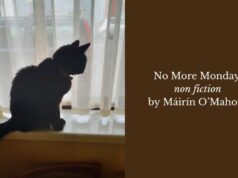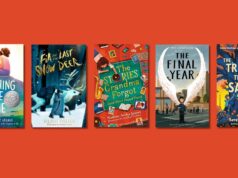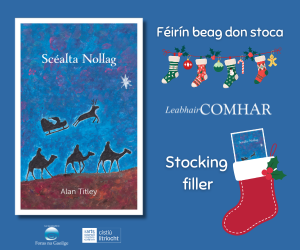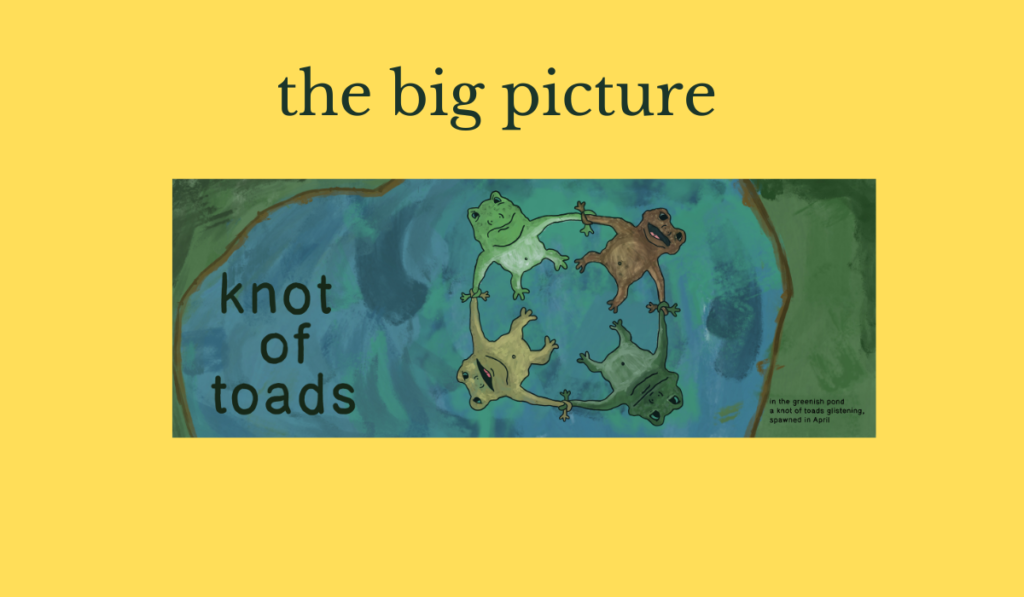
Knot of Toads illustrated by Nick Geoghegan|21st Century Renaissance|ISBN 9780992736866
by Alison Hackett
Have you heard of a parliament of owls, or a murder of crows? These were the first groups of animals that Nick Geoghegan considered when he was asked to design a book of collective nouns for a college project. But he became drawn to the less familiar—such as a caravan of camels, or a conspiracy of lemurs—and the seeds for the children’s book Knot of Toads were sown.
There were endless humorous possibilities as he interpreted these nouns literally—the animals were featured in the context of human situations: a flush of ducks really meant ducks being flushed down a toilet.
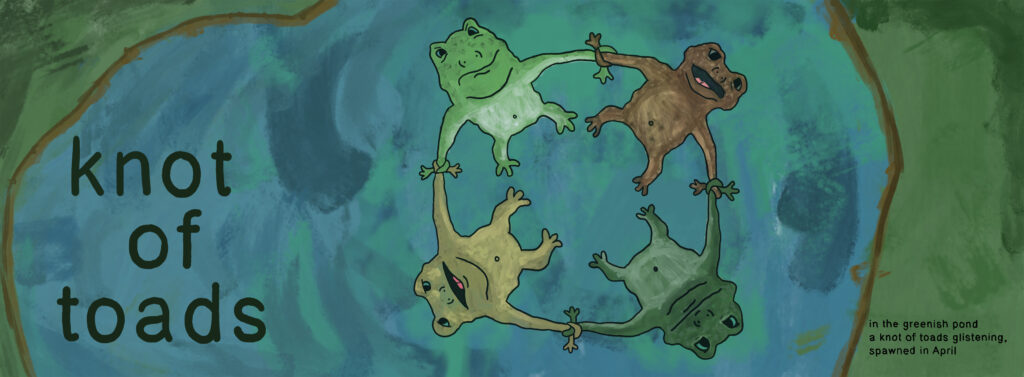
in the greenish pond a knot of toads glistening spawned in April
The illustrations needed to be easy for very young children to understand, so there was an emphasis on these kinds of literal interpretations—camels in caravans, whales in pods, gorillas in a band. The humour was clear—but just a noun and an illustration on each page felt one-dimensional. Keeping in mind the target audience of children—but also their adult carers (who are too often neglected in books to be read to kids), having something further for the carer to read became important.
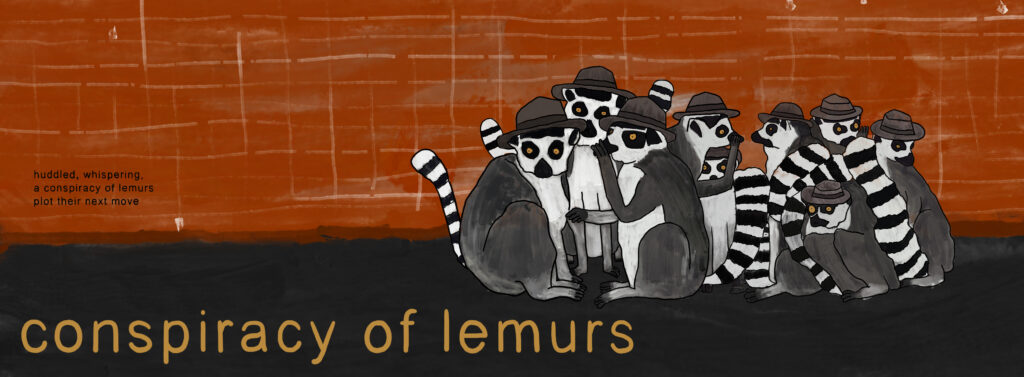
huddled, whispering, a conspiracy of lemurs plot their next move
This is when Alison Hackett and Arnie Yasinski, who workshop poetry on a weekly basis, thought that a haiku to accompany each illustration would deepen the experience.
Haiku—which are short poems with with just seventeen syllables—are simple, but can also be rich and complex. To begin with they wrote the poems without looking at the illustrations, then later looked to the pictures to see what would resonate best.
It worked. Some of the haikus were by Yasinski, some by Hackett, but many were a melding of the two. Because they wanted them to be accessible to children, they sometimes included light humour not traditionally found in haiku. But the form— three lines of five-seven-five—meant they retained a formality that hinted at seriousness and importance. A beautiful result was a central stillness that complemented and grounded the liveliness of the illustrations.
Geoghegan’s style is painterly — he uses brushes and sponges (within Photoshop) for both illustrations and backgrounds. A painter at heart, he takes a brush, sweeps it across, erases when necessary, paints again, darker, adds another layer in another colour and texture, undoes, redoes: the digital format begins to merge with the analogue format. Then, by hand-writing all of the text, he merges art and the written word, further adding to the depth in the form of combined mediums.
Responses to the book from both adults and children have been enthusiastic. Children quickly develop favourite illustrations. Phoebe, aged 7, in Dublin says, “My favourite picture is the tower of giraffes. My least favourite is the nest of vipers.” Ethan, aged three in Toronto, tells his parents how funny it is seeing the ducks in the toilet.
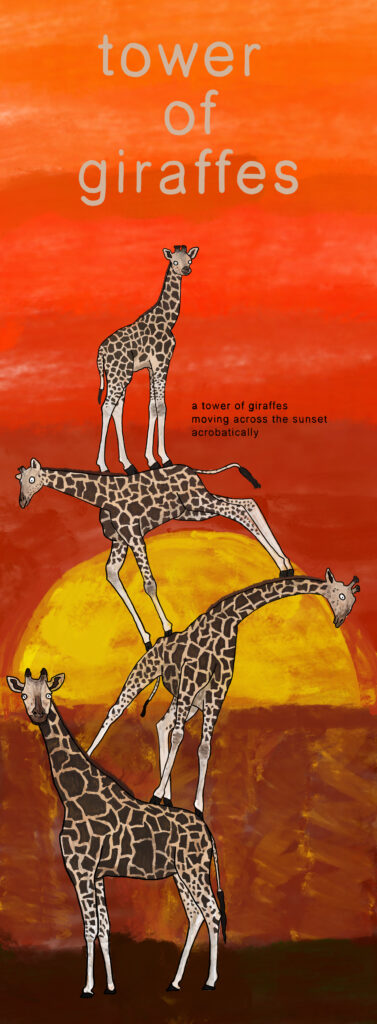
The haikus appeal to adults because of a higher cognitive demand, but in reading them aloud the children are drawn in to the deeper meanings that can be elicited from language and image. Anna from Dublin, mother of Phoebe, writes, “we counted all the syllables in the haikus as she read them this morning. Really brilliant.”
Even more to the point, Bairbre, mum of 2-year-old Aoife, says “every evening (sometimes twice) Aoife and I read Knot of Toads—she loves it more than her book about construction or Irish vehicles.”
The list of collective nouns is long, varied, and fascinating, so it’s no surprise that a second volume is already underway. Ever heard of a company of moles? Picture a boardroom table, surrounded by short-sighted mammals.
a tower of giraffes moving across the sunset acrobatically
Knot of Toads, illustrated by Nick Geoghegan with haiku by Alison Hackett and Arnie Yasinski (21st Century Renaissance) is available here.









